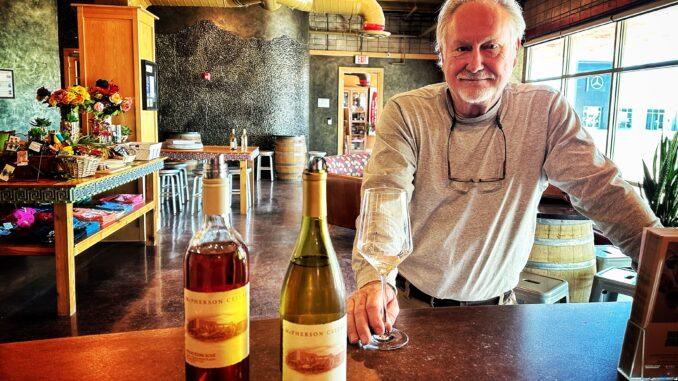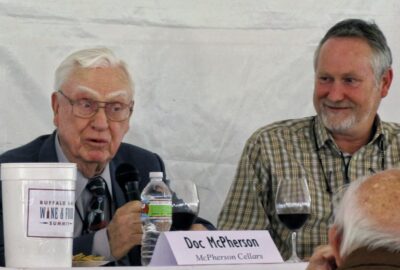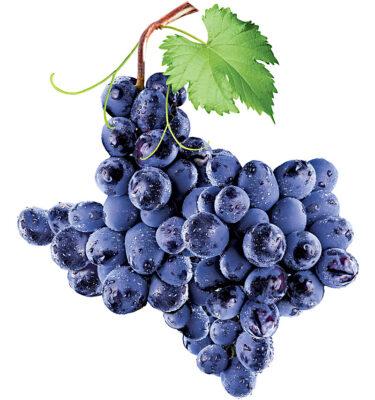
The Wineslinger Chronicles: Winemaker Kim McPherson, His Major Impact on Texas Wine From Its Beginning Through to Today
Lubbock native and son of Texas Tech University (TTU) professor Clinton “Doc” McPherson, the often called “Father of the modern Texas wine industry, Kim McPherson got his early introduction to wine from conversations at home while growing up. As Kim related in a 1984 story in the Lubbock Evening News, “My father and (fellow TTU professor) Bob Reed became interested in grape growing about 1964. They began experimenting by growing successive crops to see if grapes would do well here.”
“Bob Reed and I were professors at Texas Tech, and we used to meet over noon lunch. We brought our own lunches because we were poor professors and couldn’t afford the food they sold at the union. I said to Bob, ‘Let’s grow some grapes. We can make jelly and sell it on the roadside during the summer for some extra cash.’ We agreed, OK, we’ll just do that.”
From Kim’s description, at first, the start of grape growing wasn’t easy. However, with time, things improved and the two professors became excited about the potential for grape growing in the high plains of Texas.

Doc initially envisioned that he and Robert Reed would start grow grapes. Doc said, “Bob Reed and I were professors at Texas Tech, and we used to meet over noon lunch. We brought our own lunches because we were poor professors and couldn’t afford the food they sold at the union. I said to Bob, ‘Let’s grow some grapes. We can make jelly and sell it on the roadside during the summer for some extra cash.’ We agreed, OK, we’ll just do that.”Eventually, they switched their grape growing efforts towards making wine, and in 1976, they became the prime movers and initial shareholders that established the Llano Estacado Winery.
Kim McPherson eventually got his college food technology degree from TTU, and while a student, worked summers in a dairy lab. Eventually he realized that he wasn’t much interested this type of career. Eventually, Doc suggested Kim might like to get some training in winemaking (actually called fermentation science) in California and become a winemaker at Llano Estacado. This gave Kim a new career vision and, as he related in the 1984 Evening Journal story “I jumped at the chance.”
Personally, I’ve had the chance to meetup many times with Kim and many of his industry associates. In my book, The Wineslinger Chronicles, I related that some call Kim a winemaking legend in Texas, while others say that he’s a maverick, plain and simple. I’ve even described him as the tormented artistic soul of Texas winemaking as he experiences the weight of the Texas wine industry open his shoulders.

A way I found to describe Kim and one of his early contributions to Texas winemaking is:
“Kim’s history as a straight shooter came early in his career. After returning to Texas from California and becoming winemaker at Llano Estacado, he was one of the first Texas winemakers to pull the plug on using hybrid grapes for wine on the High Plains going instead with classic vinifera wine grapes. He was supported by experiments in Texas that showed that many European vinifera winemaking grapes were actually viable on the Texas High Plains. And, they made much better wine, as well, with wine characteristics and names customers would recognize.” In addition, Kim has been a leader in emphasizing the use of “warm weather” varieties and blends of European Vinifera grapes. These have proven to now make some of the best wine in Texas.
On one of my visits to see Kim in his winery in downtown Lubbock during a year when Texas grapes had a short harvest tonnage. Before we said our good-byes, I asked Kim, “Where’s this Texas wine thing heading?” He stopped a moment with a wrinkled brow and gave out a long sigh.
Then he said, “Gee, I don’t know, Russ. I’m just trying to get enough (Texas) fruit and make the best wines I can.”
Kim continued, “This year, I had some help from friends like winemaker Greg Bruni at Llano Estacado. We see the same picture and we are realists. Sometimes people think that we’re just assholes, all bitter and cynical, when we talk about it. That’s just not the case. I’m just not gonna tell you that it’s going to be all fun, but I am telling you the truth. It’s still hard work here, but I have proven that good Texas wines can be made (in Texas) at an affordable price.”
In the 1984 Lubbock Evening Journal, McPherson related something that is still an issue with some wine lovers both inside and outside Texas. He said, “A misconception is that anything produced locally (in Texas) can’t possibly be as good as, for example, California wines.”
However, this is not the case. Even back in 1984, Kim’s wines from Llano Estacado Winery, had already accomplishing major achievements winning silver and gold medals in major wine competitions.
Since then, there has been a lot of good history as the Texas wine industry has grown into the 5th largest state wine industry in America, and garners major accolades, medals and awards in major international wine competitions against the major brands in the global marketplace.



Be the first to comment